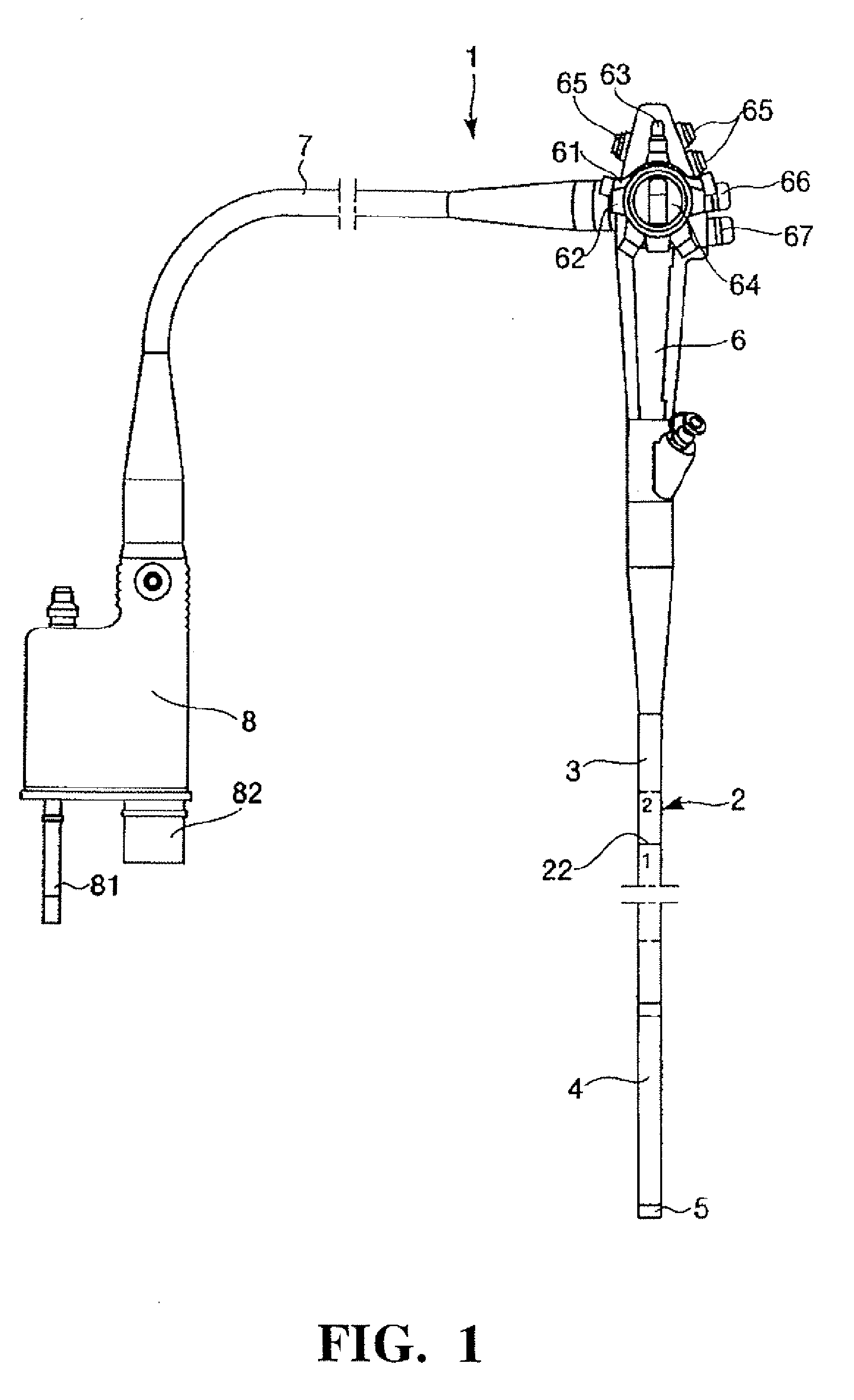Insertion section flexible tube and an endoscope equipped with the flexible tube
a flexible tube and endoscope technology, applied in the field of insertion section flexible tubes and endoscopes equipped with flexible tubes, can solve the problem of insufficient adhesiveness between the outer cover and the adhesive agent, and achieve the effect of excellent reliability
- Summary
- Abstract
- Description
- Claims
- Application Information
AI Technical Summary
Benefits of technology
Problems solved by technology
Method used
Image
Examples
example 1
[0129] [1] First, as a low adhesiveness material for use in an outer cover of an insertion section, a tube made of polypropylene (“Santoprene” which is the trademark of Advanced Elastomer Systems Japan Ltd.) was prepared.
[0130] [2] Next, a treatment liquid was prepared by dissolving chlorinated polypropylene (primary treatment agent) in a xylene solution (20 Wt %) so that the amount of the chlorinated polypropylene became 30 parts by weight with respect to 100 parts by weight of the treatment liquid.
[0131] [3] Next, as shown in FIG. 3(a), the polypropylene tube (hereinafter, simply referred to as “tube”) was dipped or immersed into the treatment liquid for one hour so that the tube was subjected to a primary treatment to thereby obtain an outer cover 32.
[0132] Note that when the thus obtained outer tube 32 was observed through its cross section, it has confirmed that the primary treatment agent was penetrated into the outer cover 32 to the depth corresponding to 90% of its thickn...
example 2
[0156] An electronic endoscope was manufactured in the same manner as in Example 1, except that the constituent material of the outer cover of the flexible tube portion was changed to polyethylene.
[0157] Note that when the thus obtained outer cover was observed through its cross section, it was confirmed that the primary treatment agent was penetrated into the outer cover to the depth corresponding to 95% of its thickness.
example 3
[0158] An electronic endoscope was manufactured in the same manner as in Example 1, except that the immersion time of the tube into the treatment liquid was changed to 30 seconds so that the primary treatment agent was not penetrated into the tube.
[0159] Note that when the thus obtained outer cover was observed through its cross section, it was confirmed that the primary treatment agent was not penetrated into the outer cover at all.
PUM
 Login to View More
Login to View More Abstract
Description
Claims
Application Information
 Login to View More
Login to View More - R&D
- Intellectual Property
- Life Sciences
- Materials
- Tech Scout
- Unparalleled Data Quality
- Higher Quality Content
- 60% Fewer Hallucinations
Browse by: Latest US Patents, China's latest patents, Technical Efficacy Thesaurus, Application Domain, Technology Topic, Popular Technical Reports.
© 2025 PatSnap. All rights reserved.Legal|Privacy policy|Modern Slavery Act Transparency Statement|Sitemap|About US| Contact US: help@patsnap.com



